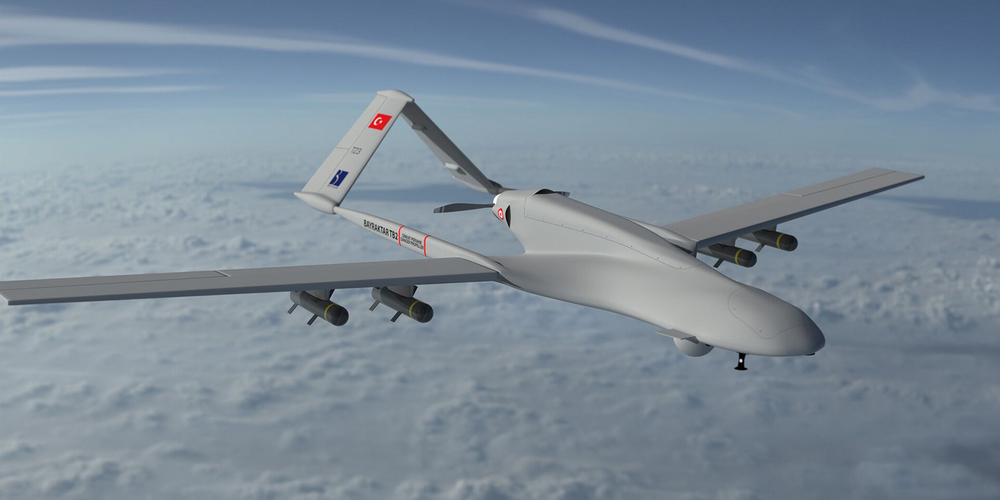Search

Publications
Turkey with its Bayraktar TB2 among the world's top UAS manufacturers

The global market of unmanned systems is saturated with drones of various types and classes. Many states and even non-government organizations can afford in-house developments in this promising area these days, albeit in small classes. The class of medium-altitude long-endurance (MALE) drones remains one of the last bastions of technologically advanced nations, a kind of indicator of the membership in an exclusive club of the chosen few. But here too, significant changes have been observed in recent years, resulting from efforts by new players and, above all, Turkey.
Over the past decades, the leading positions in the world of MALE unmanned systems have been firmly occupied by the United States and Israel. Acting partly separately, partly jointly (some US developments had Israeli roots), these countries have actually had a duopoly in the MALE UAV market for a long time.
UAV podium
US developments were represented by products from one company – General Atomics Aeronautical Systems. It was this company that developed the Predator family of drones, which, in addition to the initially reconnaissance (RQ), and then the multi-purpose (MQ) UAVs, also includes the heavier MQ-9 Reaper and the army MQ-1C Gray Eagle, and besides, the advanced Mohave and Avenger models that have not yet been adopted.
Israel was present on the market mainly with the systems from its two main developers. Firstly, it is Israel Aerospace Industries (IAI), a government-owned group of companies that developed the Heron and Eitan systems (Eitan is the export version of Heron TP), as well as some of their modifications. Secondly, it is Elbit Systems, a private company, with its Hermes 900.
These two countries initially pursued different strategies for the development and promotion of their products in the market. Owing to its financial capacity, the United States could consider its own defense and law enforcement agencies, including the Pentagon and partly the CIA, as the main customers able to fund R&Ds and provide production capacity utilization. At the same time, the United States exported its UAVs in an extremely dosed manner, initially to an extremely narrow circle of partner countries, such as the United Kingdom, Italy, Turkey, and even often limiting the functionality of the supplied systems.
On the contrary, because of its size, Israel could not rely solely on the domestic consumer. The Israel Defense Forces often acquired some systems even in single quantities in order to provide developers with a positive portfolio by the availability of the operating experience in combat conditions. At the same time, emphasis has been placed on foreign customers, and Israeli developments are really very noticeable here.
In the 2000s, after the appearance of reconnaissance and reconnaissance/strike unmanned aircraft systems in the market that set the tone for a new growth area, many countries paid attention to it and began to explore the feasibility of developing such equipment to equip their armed forces with it. Among them, in particular, were China, Turkey, India and South Africa. And while the latter has not achieved significant success so far, China and Turkey have managed to realize their ambitions in the UAV field, not only equipping their armed forces with domestically-made systems, but also seriously pushing the existing leaders on the world market.
China, thanks to its substantial financial and human resources, has implemented programs of developing at least two parallel lines of MALE-class UAV systems – Wing Loong (also known as Pterodactyl) and Cai Hong (Rainbow).
The first AVIC developments are represented by Wing Loong I and Wing Loong II UAV systems, which, besides the PLA Air Force, were also supplied to a number of foreign countries in Asia and Africa, including Saudi Arabia, Egypt, Uzbekistan, Kazakhstan, and Indonesia.
The second line, developed by the Chinese Aerospace Science and Technology Corporation (CASC), includes the Cai Hong 4 systems supplied to Algeria, Egypt, Jordan, the UAE, and Pakistan. The company's active marketing policy, backed by attractive financial conditions and the absence of political checks, allowed China to occupy a niche of a kind of unmanned «fast food» – affordable rather than top-end systems that looked similar to the US and Israeli solutions.
In Turkey, a program to develop the indigenous Anka (Phoenix) MALE-class UAV system has been implemented since 2004. At the same time, the Turkish military and political circles initially understood that the process would take some time. To temporarily fill the niche, it was decided to use foreign-developed UAV systems.
Import and attempt of cooperation
In 2005, Turkey signed an agreement with Israel on the purchase of 10 drones. The package included Heron systems, as well as, according to some reports, Harpy loitering munitions. It was planned to complete the delivery of UAVs in 2008. The contract implied the participation of Turkey’s Aselsan with its payload subsystems and their subsequent integration by Israeli Aerospace Industries (IAI). However, the interaction between the companies of the two countries became a «bottleneck» – there were delays due to technical difficulties in implementing the contract. As a result, in November 2008, Turkey received only the first two drones.
Then Turkish-Israeli relations deteriorated sharply. The reason was a conflict between the Free Gaza Movement activists and the Israel Defense Forces that took place on the night of May 30 to 31, 2010, off the coast of Gaza. During an attempt to break the blockade of the Gaza Strip, a Turkish ship was captured, people were killed. As a result, military-technical cooperation between the two countries was frozen.
Turkey considered the USA as an alternative supplier of unmanned systems. On December 4, 2008, the Turkish army sent a letter to the Department of Defense Industry (SSM) of the Turkish Ministry of Defense with a request to initiate the purchase of Predator UAVs. As a result, three systems were leased and further operated by a joint Turkish-American unit, and six more UAVs were procured through the Foreign Military Sales system. The drones were stationed at Turkey’s Incirlik Air Base and were used, in particular, to monitor the activity of Kurdistan Workers' Party (KWP) militants.
Domestic long-delayed construction
The task of developing national Turkish unmanned systems was assigned to the government-owned group of companies Turkish Aerospace Industries (TAI, Türk Havacılık ve Uzay Sanayii A.Ş.). The company designed an UAV that looked similar to Elbit Systems’ Hermes 900 – a similar shape of the fuselage, a straight high-aspect-ratio wing, a V-shaped tail. At the same time, the Turkish UAV is significantly heavier than the Israeli one – 1,600 kg against 970 kg, but it can carry only 200 kg of payload, which may indicate an overweight structure.
The Anka UAV is capable of flying for up to 24 hours at altitudes up to 9,000 meters. In addition, its radius is up to 250 km using a line-of-sight (LOS) data link system and is practically unlimited employing a satellite channel (the Anka-S version appeared later). The UAV carries an electro-optic surveillance system, and a synthetic aperture radar as well as weapons can be installed additionally. In particular, the UAV can carry MAM-C precision guided bombs or MAM-L semi-active laser-guided munitions developed by Turkey’s Roketsan.
The process of developing a new UAV took more time than it was initially expected. Tests of the first three prototypes were not completed until mid-2011. In 2012, mass manufaturing of the Anka-A for the Turkish Air Force began, and on January 20, 2013, the Turkish Ministry of National Defense completed acceptance tests. In the future, the capabilities of the UAV have been gradually expanded, but in general, the program was carried out at a very slow pace. At the same time, the new system received a rather cold reception from customers. Currently, about two dozen Anka UAVs of various versions are used by various branches of the Turkish Armed Forces, which is very few.
In addition, this system, which aroused significant export expectations, also fell short of them. Saudi Arabia never signed the planned contract for the purchase of Anka UAVs, Egypt terminated the existing contract due to political differences. At the moment, it is only known that 6 Anka UAVs were delivered to Tunisia in the spring of 2020. The value of the deal was about USD 240 mln.
A surprise from the private sector
Another Turkish reconnaissance/strike system is the Bayraktar TB2 UAV. It was developed by Baykar Makina, a private company that was initially engaged in the production of automotive components, and then, by the early 2000s, began developing robotic systems, control systems and unmanned aerial vehicles. Work on the project began in 2011, when Baykar had only a small-sized Bayraktar mini-UAV with a wingspan of 1.6 m in its portfolio (however, it was adopted by the Turkish army).
The Bayraktar TB2 UAV uses a twin-boom layout with an inverted V-tail. Its straight high-aspect-ratio wing has a span of 12 meters. The maximum take-off weight of the drone is 650 kg. A piston engine developed by Austria’s Rotax (owned by Canadian Bombardier Recreational Products) was used as a power plant. The airframe is made of composite materials with a predominance of carbon fiber.
The drone performs running take-off and landing using a tricycle non-retractable landing gear (only its nose gear is retracted). Bayraktar is capable of flying for up to 24 hours, carrying up to 150 kg of both reconnaissance and strike payloads. Its onboard reconnaissance equipment consists of the MX-15D multichannel electro-optic surveillance system with a laser rangefinder/designator from Wescam, a Canadian company.
Bayraktar TB2 took off on its maiden flight in August 2014. In December 2015, its armament – MAM-L (Smart Micro Munition) lightweight laser-guided glide bomb developed by Roketsan specifically for arming Turkish UAVs – was successfully tested. Later, the drone’s armament was also supplemented with the MAM-C munition, its reduced version weighing 6.5 kg and fitted with a multipurpose high-explosive/armor-piercing/ incendiary warhead.
In military service
Baykar Makina's developments, despite their prospects and relevance, could join the ranks of similar poorly demanded pilot projects of many similar startups. And it would surely have happened, especially taking into account that the Turkish military preferred products from major companies. However, in May 2016, an event occurred that certainly had an impact on the subsequent fate of Baykar: one of the sons of Selchuk Bayraktar, the founder of the firm, became the husband of the youngest daughter of Turkish President Recep Tayyip Erdogan. Sometime later, the company was given the opportunity to demonstrate the Bayraktar TB2 during joint military training operations in Izmir, and later the Bayraktars were adopted.
According to available data, at least 75 Bayraktar TB2 UAVs were delivered to the Turkish defense and law enforcement agencies (that is, at least twice as many as the Anka UAVs). They were used in the Turkish Armed Forces’ operations against Kurdistan Workers' Party (KWP) militants and the Kurdish People's Self-Defense units. In 2016 alone, about 400 KWP militants were killed in operations involving Bayraktar TB2. During only one operation against the Kurds in the Syrian region of Afrin in 2018, these UAVs accounted for a fifth of the militants destroyed by the Turkish army, and 449 militants were eliminated with the help of Bayraktar TB2 drones in just three months of operation.
Bayraktars were also used in Libya, where they were employed in battles with units of the Libyan National Army (LNA) under command of Field Marshal Khalifa Haftar. The use of Turkish Bayraktar TB2 drones since June 2019 provided considerable assistance to the forces loyal to the Government of National Accord (GNA) headed by Fayez Al-Sarraj and was able to balance to some extent the use by the Libyan National Army of Chinese-made heavy drones provided by the UAE. The Turkish Bayraktar TB2 played a significant role in regaining control of the GNA forces over the city of Garyan, as well as in the destruction by pinpoint strikes of the commanders of some LNA brigades, for example, the Kani brothers, who commanded the 9th LNA brigade from the town of Tarhuna.
At the same time, despite the successful use of Bayraktar TB2 in Libya, their effectiveness was seriously limited by the fact that they had to engage dispersed targets, located deep in the territory controlled by the enemy. In addition, the GNA forces did not have modern artillery that could effectively «accompany» drone actions, i.e., engage area or large targets – air defense and EW system positions deployed by the LNA near Tripoli. Therefore, the first batch of Bayraktars in Libya (up to 6 units) was completely «knocked out» by the autumn of 2019. As a replacement for the destroyed first batch, 12 new Bayraktar TB2s were received from Turkey.
In Syria, Bayraktar TB2 drones were extensively deployed by the Turkish Armed Forces during Operation Spring Shield in Idlib in February 2020. They acted as a key operational element of fire support, surveillance and reconnaissance. The drones performed direct air support of the operation on such a scale and with such effectiveness that they replaced combat and reconnaissance aircraft. This, in particular, enabled the Turkish-backed groups to capture the city of Serakib. The key to success was the combined use of precision guided air weapons and long-range artillery, which received target designation from the UAVs.
Foreign supplies
The demonstrated capabilities of the new Turkish UAVs have not gone unnoticed in the world. The first foreign buyer of Bayraktar TB2 was Qatar, which in 2018 acquired a system with 6 UAVs, 2 ground control stations and other related subsystems and equipment. Following Qatar, in 2019 Ukraine made a similar order. Later, Kiev continued cooperation – additional UAVs were purchased in 2021, and an agreement was signed on the licensed production of Bayraktar TB2 on the territory of the country.
In 2020, the Bayraktar TB2 UAV was acquired by Azerbaijan. A certain surprise was that in the autumn of the same year they were actively used during the fighting in the Second Karabakh War. In general, the use of drones here was more than large-scale. A high level of availability of these unmanned systems in the Azerbaijani forces made this armed conflict a live war, which, in addition to direct action, had also a huge demoralizing pro-paganda impact on Armenians.
This was properly used by Baykar Makina’s marketing team, thus bringing new customers, mainly from Eastern European countries. In May 2021, Polish Minister of National Defense Mariusz Blaszczak announced the upcoming conclusion of a contract for the purchase of four Turkish Bayraktar TB2 reconnaissance and strike UAV systems for the Polish Armed Forces, including 24 UAVs and weapons for them. The contract was signed out of competition soon after its announcement during the official visit of Polish President Andrzej Duda to Turkey, as part of the so-called urgent need. Poland thus became the first member country of the European Union and NATO to acquire drones from Turkey.
On April 11, 2022, Serbian President Aleksandar Vucic announced that during negotiations with Recep Tayyip Erdogan he asked the Turkish President to deliver Bayraktar TB2 drones to Belgrade. And then on April 13, Slovak Defense Minister Jaro Nagy made a statement that negotiations with Baykar were progressing as part of a broad plan to acquire foreign unmanned aircraft systems for the national Armed Forces.
It was reported that other NATO countries, Albania and Bulgaria, also showed interest in the Bayraktars. The first CSTO country to purchase Bayraktar TB2 was Kyrgyzstan. Kazakhstan is next in line.
«We write two, three in mind»
The success in the implementation and promotion of the Bayraktar TB2 UAV provided an influx of funds to the company, and also gave the developers confidence in their abilities, which eventually, together with the availability of research, design and technology solutions, encouraged the implementation of two more larger UAV projects – Bayraktar TB3 and Akinci.
Bayraktar TB3 is a heavier version of the TB2. Work on the project has not yet been completed. The maiden flight is scheduled for the current 2022. At the same time, tests of the drone should begin. And a year later, in the event of the favorable development of the situation, fielding of Bayraktar TB3 is possible.
Structurally, the Bayraktar TB3 uses the same configuration as the «previous» model, but it is much larger and heavier – the maximum take-off weight was more than doubled to reach 1,450 kg. The PD-170 engine with a capacity of 170 hp should be installed on the UAV, which, unlike the engine of the previous model, is already a Turkish product developed by Tusas Engine Industries (TEI) , a specialized engine company controlled by TAI.
It was reported that the cruise speed of the Bayraktar TB3 UAV is about 232 km/h. The drone can stay in the air for more than 24 hours. The radius is apparently unlimited due to the use of a satellite communication channel. The developer reported a decking capability of this UAV model. In particular, they are supposed to be used on board the future Turkish universal amphibious assault ship Anadolu. Separately, it was emphasized that take-off and landing, including on the deck, will be carried out in automatic mode.
The payload capacity of the TB3 has been brought up to 280 kg, thus expanding the number and range of air weapons carried. Its weapon loadout may include MAM-C, MAM-L and MAM-T precision guided bombs, L-UMTAS, Roketsan Cirit ATGMs and some other existing and advanced weapons.
The second of the mentioned promising UAVs – Akinci – is at the upper boundary of the MALE-class systems. The first photos of the new drone appeared in the Internet in June 2018. Its maiden flight was performed on December 6, 2019, and in August 2020, the second prototype began flying.
The Akinci uses the normal aerodynamic configuration with a high aspect-ratio wing having a characteristic «gull» break. Its maximum take-off weight is 6,000 kg. Two AI-450S turboprop engines from Ukraine’s Motor Sich, rotating 5-blade tractor airscrews, are used as a power plant at the first stage. Further, a change to more powerful Turkish-made PD-170 engines, similar to those used on the Bayraktar TB3 UAV, is envisaged.
The take-off and landing of the Akinci drone are performed automatically. The service ceiling is 9000-12000 m. The maximum endurance is at least 24 hours. The developer indicates that the UAV can carry up to 1,500 kg of payload, including ISR sensors (a multi-channel electro-optical surveillance system and radar).
In addition, the Akinci also carries weapons, for which four hardpoints are provided under each wing console and one more under the fuselage. The weapon mix may also include those models provided for the Bayraktar TB3, as well as the SOM-A long-range cruise missile (developed by TÜBITAK-SAGE (Defense Industries Research and Development Institute), as well as US bombs MK-81, MK-82, MK-83. In addition, the possibility of using Gokdogan and Bozdogan air-to-air missiles is under consideration.
Thoughts, observations, conclusions
The success of Turkey in the field of unmanned aircraft systems noted in the world today is mainly related to Baykar’s products, and among them – mainly to the Bayraktar TB2 UAV. And not only to the product itself, as such, but also to the effect that its appearance produced. In technical terms, it had an exceptionally positive impact both on the course of affairs at Baykar and the status of close and related national development projects. In geopolitical terms, this raised the status of Turkey, it joined the club of high-tech countries, enabling the country to spread influence through supplies to interested foreign customers.
This success is explained by a combination of several factors.
First, there’s the right decision made by Baykar Makina’s management, and first of all by Selchuk Bayraktar, to refocus on a new but promising niche of unmanned systems. The step was very risky, taking into account the more than modest background available at the time of making this decision, eminent competitors, and generally the lack of disposition on the part of the main customer, but, as time has shown, the choice turned out to be absolutely correct.
Second, the products from Baykar, a private company, appeared at the right time – there was a growing demand for unmanned vehicles in the country both for its own needs and for realizing the geopolitical ambitions that the Turkish leadership had. The difficulties that arose in using imported drones, as well as delays in the implementation of the indigenous large-scale state program also played into the hands of the Bayraktars.
Third, a certain level of specialized engineering and vocational education has been achieved in Turkey. This has become possible both due to the development of its own education system, including higher education, and the availability of education abroad. Selcuk Bayraktar himself graduated from Istanbul Technical University in 2002, and then studied in the USA, at the University of Pennsylvania and the Massachusetts Institute of Technology. Thus, the seeds of new ideas fell on fertile soil.
Fourth, indigenous developments of UAV subsystems have emerged in Turkey. They arose because the Turks did not forget the arms embargo imposed by the United States in 1974 after the operation carried out by Ankara in Cyprus. Although the embargo was short-lived, the necessary conclusions were drawn – the Turkish leadership decided to launch a large-scale import substitution program and set up national defense firms such as Aselsan, Havelsan, Roketsan, etc. Accordingly, certain groundwork had been laid for the implementation of a comprehensive project.
Fifth, Turkish developers had the opportunity to purchase separate UAV subsystems on foreign markets, enabling them to design a product bearing in mind the prospects for integrating ready-made and proven components, without wasting time and resources on specific issues. Yes, as a result, relying on foreign components made Bayraktar unmanned systems vulnerable to sanctions, as the conflict over Karabakh showed. However, at first that worked and provided a high pace of implementing projects.
This is an example of successful implementation of plans to establish a new high-tech defense business in the field of unmanned systems illustrated by the case of Turkey. The combination of all the factors that have developed at the right time for Baykar Makina is hardly possible to repeat anywhere. It is not possible to suggest a kind of guidance from the above for other companies wishing to follow the same path. However, the analysis of Turkish Baykar Makina’s experience and the sequence of its actions taken to achieve success are certainly of value.







